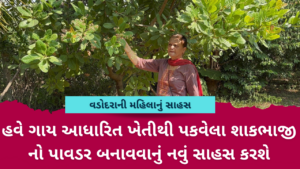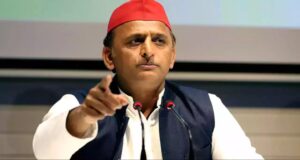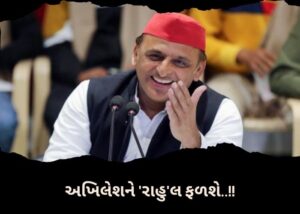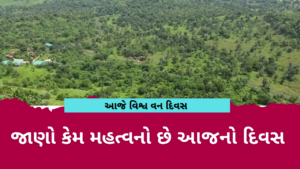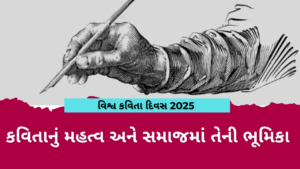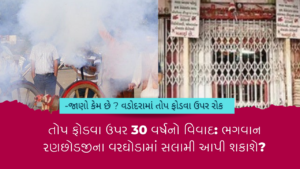–An Article by Poojan Patel
Before modern banks, India’s financial system relied on ancient practices like moneylenders and hawala traders. These early systems, though informal, laid the groundwork for a more organized banking structure. As trade expanded and the economy grew, the need for a formal banking system became clear. The Bank of Baroda’s story reflects India’s journey towards a modern financial system.
 The Bank of Baroda (BoB) is an Indian state-owned banking and financial services organization, headquartered in Vadodara (earlier known as Baroda), in Gujarat, India. It is one of India’s largest banks with a network of over 12,000 branches and over 13,000 ATMs spread across India, and a strong international presence with branches in over 23 countries.
The Bank of Baroda (BoB) is an Indian state-owned banking and financial services organization, headquartered in Vadodara (earlier known as Baroda), in Gujarat, India. It is one of India’s largest banks with a network of over 12,000 branches and over 13,000 ATMs spread across India, and a strong international presence with branches in over 23 countries.
“Bank of Baroda is a respected institution that has made significant contributions to the Indian economy. The bank is a leader in corporate banking, retail banking, and institutional banking.” – Chanda Kochhar, former Managing Director and Chief Executive Officer, ICICI Bank
“Bank of Baroda is a pioneer in digital banking and has been at the forefront of introducing innovative products and services to its customers.” – Nandan Nilekani, co-founder of Infosys and former chairman of the Unique Identification Authority of India
History of Bank of Baroda
The Bank of Baroda was founded in 1908 by Maharaja Sayajirao Gaekwad III of the princely state of Baroda. The bank’s mission was to provide financial services to the people of Baroda and to promote economic development in the state. Sayajirao Gaekwad III, set up the Bank of Baroda (BoB), with other stalwarts of industry such as Sampatrao Gaekwad, Ralph Whitenack, Vithaldas Thakersey, Lallubhai Samaldas, Tulsidas Kilachand and NM Chokshi.
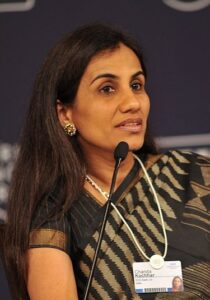 In 1910, the Bank of Baroda opened its first branch outside of Baroda, in Bombay. The bank continued to expand rapidly in the years that followed, opening branches in major cities across India.
In 1910, the Bank of Baroda opened its first branch outside of Baroda, in Bombay. The bank continued to expand rapidly in the years that followed, opening branches in major cities across India.
In 1969, the Bank of Baroda was nationalized by the Government of India. This was part of a larger wave of nationalizations of the Indian banking industry.
BOB – Mirroring India’s economic and social transformation.
“Bank of Baroda is a symbol of India’s financial strength and resilience. The bank has a rich legacy of innovation and has consistently adapted to the changing needs of its customers.” – Arundhati Bhattacharya, former Chairperson, Indian Bankers’ Association
In 1947, India gained independence from British rule, marking a pivotal moment in the nation’s history. The newly independent nation embarked on a journey of economic self-reliance, seeking to break free from the shackles of colonial exploitation. The Bank of Baroda played a crucial role in this economic awakening, providing financial support to India’s burgeoning industries and expanding its reach to serve the needs of a nation eager to chart its own economic destiny.
 In the 1960s, India faced the daunting task of feeding its growing population. The government launched the Green Revolution, introducing new agricultural technologies and high-yielding varieties of seeds to boost agricultural productivity. The Bank of Baroda actively supported the Green Revolution by providing credit to farmers, enabling them to invest in modern farming practices and transform India’s agricultural landscape.
In the 1960s, India faced the daunting task of feeding its growing population. The government launched the Green Revolution, introducing new agricultural technologies and high-yielding varieties of seeds to boost agricultural productivity. The Bank of Baroda actively supported the Green Revolution by providing credit to farmers, enabling them to invest in modern farming practices and transform India’s agricultural landscape.
In 1969, the Bank of Baroda, along with other major banks in India, was nationalized by the government. This nationalization aimed to expand financial inclusion and ensure that banking services reached the underprivileged sections of society. The Bank of Baroda expanded its network to rural areas, providing financial services to communities that were previously underserved.
The global financial crisis of 2008 sent shockwaves through the world economy. However, the Bank of Baroda weathered the storm, demonstrating its financial resilience and sound risk management practices. The bank continued to provide financial support to Indian businesses and individuals, helping to stabilize the economy during a period of global uncertainty.
Key milestones in the history of Bank of Baroda
- 1908: The Bank of Baroda was founded by Maharaja Sayajirao Gaekwad III of the princely state of Baroda.
- 1910: The Bank of Baroda opens its first branch outside of Baroda, in Bombay.
- 1918: The Bank of Baroda becomes a public limited company.
- 1937: The Bank of Baroda opens its first branch in Calcutta.
- 1949: The Bank of Baroda opens its first branch in Delhi.
- 1953: The Bank of Baroda opens its first two overseas branches, in Mombasa (Kenya) and Kampala (Uganda).
- 1957: The Bank of Baroda establishes its operations in the United Kingdom, with a branch in London.
- 1964: The Bank of Baroda becomes the first bank in India to set up mobile branches.
- 1968: The Bank of Baroda establishes a Department of Agriculture Finance.
- 1969: The Bank of Baroda is nationalized by the Government of India.
- 1976: The Bank of Baroda opens its first branch in New York City.
- 1981: The Bank of Baroda introduces its first ATMs.
- 1985: The Bank of Baroda launches its first credit card.
- 1996: The Bank of Baroda launches its online banking platform.
- 2001: The Bank of Baroda acquires Bank of Baroda (Uganda).
- 2002: The Bank of Baroda acquires Benares State Bank.
- 2003: The Bank of Baroda merges with Nimai Bank.
- 2005: The Bank of Baroda launches its first mobile banking application.
- 2006: The Bank of Baroda opens its first branch in Dubai.
- 2007: The Bank of Baroda acquires Mehta Union Bank.
- 2008: The Bank of Baroda acquires Vysya Bank.
- 2009: The Bank of Baroda merges with Vijaya Bank and Dena Bank.
- 2019: The Bank of Baroda becomes India’s third largest bank by assets.
- 2020: The Bank of Baroda launches its first digital branch.
- 2021: The Bank of Baroda launches its first virtual assistant, BOB Mitra.
- 2022: The Bank of Baroda launches its first chatbot, BOB Chat.








